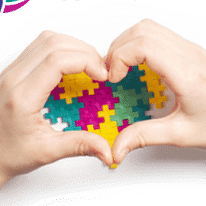- Contact Us
- (908) 874-0417
- Member Login
- Get Listed Now

As a teacher and a mom, I learned that children often seek attention. That kid, who is always in trouble and causing disruption, is the first to be labeled as an attention seeker. And, it’s true. However, they don’t care if the attention is positive or negative. Attention is attention, right?
Well, over the years, I learned a couple of tricks. First, when you remove attention from negative behaviors, things get a lot easier for both parties. The teacher is less frazzled, the child will avoid all the negative energy, and the child will learn more.
It’s the same with a toddler. How often have we been told that if we give in to a tantrum, the child will learn that it is a method to get what they want? And although tantrums are a normal part of toddlerhood, don’t be fooled – they know when they have you wrapped around your finger.

Regardless of the cause of unwanted behaviors, negative attention will never see you through it. For example, what did I do when I removed negative attention from the challenging child in my class? I used one of two methods. First, I wouldn’t acknowledge it if they were acting out or doing something disruptive. What I would do, is find something positive to compliment the child next to them. They’d see me giving another child attention and wanted some too. The negative behavior didn’t work…maybe they should do what the other kid was doing to receive a compliment. Sneaky, right? But oh, so effective.
The other method was a little more straightforward but worked all the same. Focus on the positive, reward good progress, and let the child understand that there is much more to be gained from behaving appropriately than from not.
The greatest challenge with autistic children, even more so than neurotypical children, is that they don’t respond well to negative attention. In other words, you can’t punish them into behaving appropriately because it won’t work.
Negative attention is when you respond to your child’s misbehaviors by making a big deal out of it. It is a way of paying attention to your child in a way that is not helpful to them. There are many ways of giving kids negative attention. For example, a child who refuses to put their toys away when asked and gets a scolding for it is getting negative attention. A kid who does not want to go to school and gets a lecture about how important school is for their future is also getting negative attention. All children get it from time to time.
It’s important to understand that negative reinforcement simply means taking something away. It does not have to be something bad. Sometimes, negative reinforcement can even be a way to reward a child. For example, taking away a child’s time out is actually a good thing for the child. Negative reinforcement can help to strengthen a response or behavior by stopping, removing, or avoiding a negative outcome or aversive stimulus. For example, rather than delivering a punishment or a reward (positive reinforcement), negative reinforcement takes something away from the individual.
Aversive stimuli can cause us to feel uncomfortable. We can avoid these uncomfortable feelings by doing things that help us escape from them or prevent them before they happen. For example, taking something for motion sickness before a road trip can help you avoid feeling sick.
One common mistake is confusing negative reinforcement with punishment. it’s important to remember that negative reinforcement involves removing a condition whereas punishment is an imposed consequence. This could be physical or verbal scolding, time-outs, removal of privileges, or restrictions on certain activities. Punishment also involves adding or taking away a stimulus to decrease a behavior.
Think about the following example and decide if it is an example of negative reinforcement or punishment.
James is supposed to take out the trash and feed the dogs every Sunday morning. However, last Sunday, he went to a friend’s house instead. When he got home, his father was frustrated and made him clean the attic and basement, take out the trash, and feed the dogs.
You are right if you said this was an example of punishment. Because James didn’t do his chores, his father punished him by making him do extra chores.
Punishment is when an undesirable consequence is added because of a behavior. Negative reinforcement for negative behaviors is when something is taken away to avoid or alleviate an unwanted effect.
Positive reinforcement is a great way to motivate someone to keep up a particular behavior. By providing a reward for the behavior, you can encourage the person to keep doing it. The rewards can be anything from allowances to special activities to verbal praise.

Remember the disruptive child in my classroom? I eventually gave him a sticker chart. For every day he tried to be less disruptive and more productive, he earned a sticker. Five stickers earned him a prize – tailored to his value system, so it was a genuine motivation. The positive reinforcement here is stickers and rewards. The behavior achieved is a more focused and less disruptive child.
The goal of both positive and negative reinforcement is to decrease unwanted behaviors and increase desired behaviors.
The answer is both – or neither. It all depends on the circumstances.
Negative reinforcement should not be misinterpreted as something negative. The term “negative” simply means “to take something away.”
Likewise, when used correctly negative reinforcement does not reinforce negative behavior. Negative reinforcement can be used in a way to encourage good behavior. When it is used correctly, it helps us do the right thing and rewards us by taking away something bad. This leads to a good result.
Most people think that positive reinforcement means spoiling a child or lavishing them with praise, which is a good part of its essence, but not all.
Positive reinforcement is actually something we’re all pretty familiar with. For example, did you get a weekly allowance for chores when you were a kid? Do you get raises, good reviews, or small perks when you do well at your job? Reinforcing a child’s good behavior with positive outcomes (praise or rewards) will undoubtedly help that child repeat the behavior. For example, continuing to be on time at work helps to increase the chances of receiving a raise or recognition. This is positive reinforcement.
When a child with autism is learning new socially appropriate behaviors, they are usually unlearning socially inappropriate behaviors at the same time. In fact, many times, the new skills or behaviors children learn in their ABA sessions are carefully planned replacements for socially inappropriate behaviors. The BCBA and parents have discussed these and are determined to work on them as part of the child’s treatment plan.
Positive reinforcement is one of the most successful methods of teaching and sustaining new skills and behaviors.
To put it simply, when a child eats all their veggies and is offered dessert, it’s positive reinforcement. It will make the child more likely to eat their veggies next time. However, if the child is devastated to find carrots on their plate, which they despise, it may make it harder for them to eat everything on their plate. If you remove the carrots, which results in the child happily eating the rest of the veggies, it is an example of negative reinforcement.
So, again, it all depends on the circumstances – one type of reinforcement may achieve greater results than the other.
Negative attention occurs when a child misbehaves, and a parent or guardian scolds them. In such a case, the adult is giving negative attention, and the child is receiving it. Unlike negative reinforcement, which aims to have a positive outcome, negative attention often leads to negative consequences for the child.

Children often seek negative attention when they don’t receive enough of the positive kind. Although being scolded and punished is usually unpleasant, the child feels validated by this negative reinforcement and may seek more. This pattern often starts a cycle wherein a child’s disobedience and poor behavior escalate because they want additional attention.
Parents may find it difficult to ignore a child’s misbehaviors and often overreact. They may also get so frustrated with the situation that they physically punish the child, which is not recommended by experts. Negative attention only worsens the problem because it increases the child’s misbehavior. You want to build positive associations with your child and their behaviors, not negative ones. If your child misbehaves, try to stay calm and not get frustrated. Remember that your child often doesn’t understand what they are doing is wrong. They are just trying to get your attention.
Positive reinforcement is at the heart of applied behavior analysis. It is also at the heart of what we do at Circle Care Services. Your child’s treatment plan is specifically designed to accommodate your child’s needs and our staff is trained to keep the experience fun and motivating for your child. By keeping the experience positive for your child, all of the work will feel like play!
If you’re interested in learning more, consider signing up for our email list! We send helpful tips and tricks for parents of children with autism who might benefit.
|
|
Added By: | |

|
Circle Care Services Family Activities Highland Park, NJ 08904 US |
| View Profile » Contact » | |
